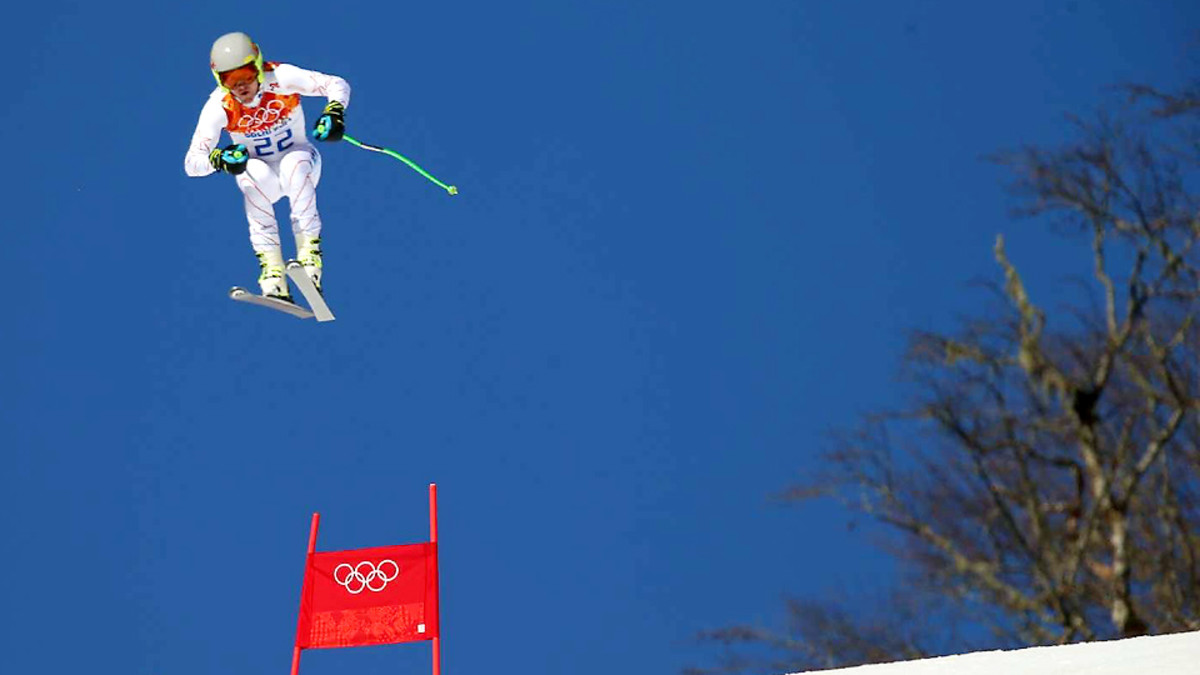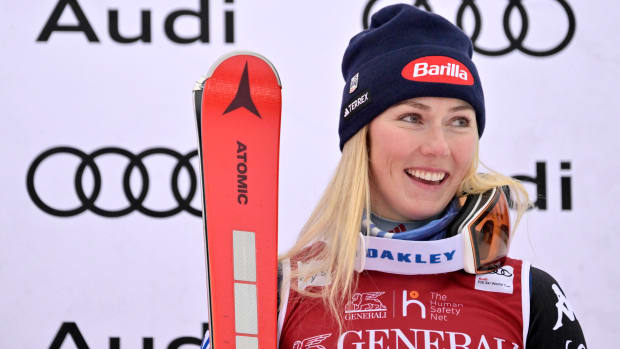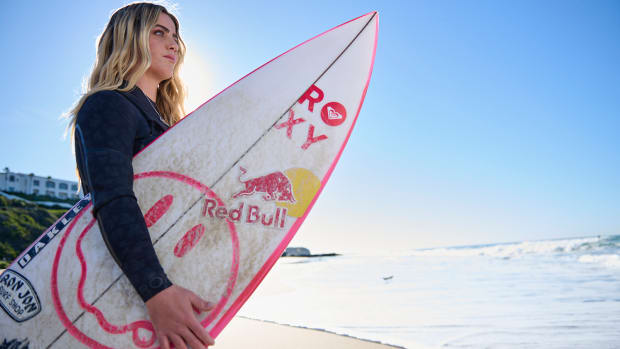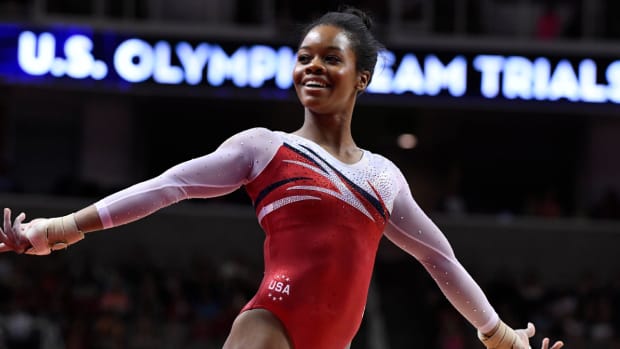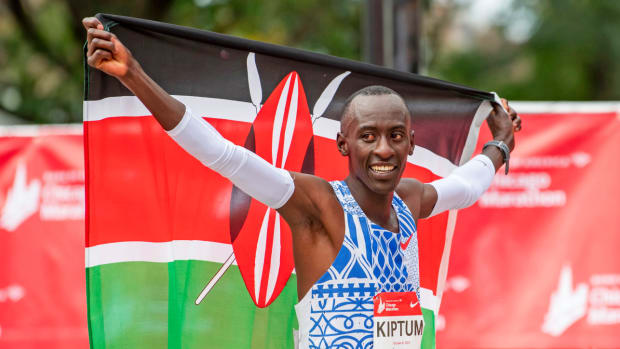Quirky combined adds to U.S. alpine woes as Ligety, Miller flounder
KRASNAYA POLYANA, Russia -- Among the five Olympic alpine ski racing disciplines, the combined -- which pairs a single run of downhill with a run of slalom and awards a gold medal to the skier with the fastest cumulative time --- is the quirkiest and most prone to unexpected results.
First, slalom specialists roll down a mountainside on the edge of disaster and vaguely out of their depth. Then downhillers flounder in the tight turns of the slalom like neighborhood kids on a sledding hill in a blizzard. Mix with the wildly variable weather conditions in the Caucasus Mountains north of Sochi and you might get something crazy.
You might get Sandro Viletta, a 28-year-old Swiss with a bad back and exactly one World Cup victory in his career, left standing with a gold medal around his neck Friday afternoon. You might get Ivica Kostelic, a 34-year-old Croatian who came to Sochi with combined silver medals in the last two Olympics but with a body punished to the point of needing 15 lifetime surgeries and a season of World Cup failure behind him, with another silver. You might get Italian Christof Innerhofer, the silver medalist in the downhill, standing with the bronze and saying, “It is a great surprise.”
You might also get a U.S. Ski team without a medal for the third time in four events of the Olympic competition. Bode Miller, the defending gold medalist, gave away too much on his morning downhill and skied what he called a “pretty lousy” slalom, leading to a sixth-place finish.
Ted Ligety, who won the combined at the 2006 Games and the world championship last year, was far too tentative in the slalom leg -- “I skied way too conservatively, and that’s really frustrating,” he said -- and was a distant 12th. First-time Olympian Jared Goldberg beat Ligety and finished 11th.
It is too early to sound the failure alarms for the U.S. Team but not too early to take note of their location. In four events, U.S. alpine skiers have only Julia Mancuso’s surprise bronze in last Monday’s women’s combined. After four events four years ago in Vancouver, the U.S. team had won six medals, including a gold by Lindsey Vonn in the downhill. Vonn is rehabbing her twice-reconstructed right knee and not participating in these Games, an absence which was sure to affect the medal count. (The order of races was different in Vancouver; Miller’s combined gold came in the sixth event of the 2010 Olympics).
LAYDEN: Maze, Gisin tie in women's downhill; favorite Mancuso fails to medal
Saturday morning brings the women’s Super-G, in which Mancuso will try for a second medal on the soft snow she craves. The men’s Super-G will follow on Sunday; Ligety is the defending world champion, and Miller, who was a disappointing eighth in last Sunday’s downhill, won a silver medal in Vancouver.
Next week brings the so-called technical races of giant slalom and slalom. Ligety is the gold medal favorite in the giant slalom and 18-year-old Mikaela Shiffrin is the favorite in the women’s slalom and a medal threat in the GS.
However, there’s no banking medals in advance. The U.S. breakout in Vancouver was an aberration from recent Olympic struggles. In 2006 Ligety and Mancuso (gold in giant slalom) accounted for the only two U.S. medals; four years before that in Salt Lake City, Miller’s two silvers (combined and giant slalom) were all the U.S. won.
LAYDEN: Miller a study in vacillation after downhill disappointment
Buzz surrounding Friday’s combined event had centered on warm conditions which disadvantaged racers who started late in the morning downhill. FIS, the international governing body for ski racing, moved the start of the race up one hour from 11 to 10 a.m. in an attempt to preserve the integrity of the course. Early starters still dominated; eight of the top 10 finishers in the downhill were among the first 16 racers down the hill.
Miller, stating 24th, finished 12th; Ligety, starting 22nd, was 18th. Both were in a hole. Miller was once a strong slalom racer but not in recent years.
“Me and slalom have a tough relationship,” he said between runs. “I love it and I hate it. It’s tough.”
His gold medal-winning slalom in Vancouver was considered borderline miraculous, a Joe Hardy-esque summoning of past powers. Ligety, however, while 1.93 seconds behind leader Kjetil Jansrud of Norway, was considered still in the hunt because of his slalom skills , as was slalom specialist Alexis Pinturault of France.
Eventual gold medalist Viletta, a Super-G and giant slalom specialist who led Ligety by .29 seconds and Pinturault by .80 seconds, didn’t think his lead was big enough over either man. He said after the race, “I didn’t look at the rankings, [but] I knew that Ligety and Pinturault were just [about] point-four seconds ahead of me. Normally, it’s not possible [to beat them].” But in fact Viletta’s downhill edge was enough, better than he understood at the time.
The slalom course was set by Croatian coach Ante Kostelic, who also happens to be Ivica Kostelic’s father. All slalom courses in World Cup races and Olympics are set by national team coaches chosen in a blind draw. Kostelic’s course sets are known to be idiosyncratic.
It is unusual in sports to have a parent controlling the playing environment but well within the traditions of ski racing. It is a part of the sport. (Ivica Kostelic said: “With my father, he’s got so many tricks, I don’t know what he’s going to, I just know it’s going to be a course where there will be no accidental winner.”)
Five of the first 11 slalom starters either fell or missed gates. Ligety came down 13th and was only able to ski into third place, which was highly unlikely to hold up with so many racers remaining. He had watched one racer blow out of the course and was told that Pinturault had not finished, so he dialed back his risk.
“I just respected the course too much,” Ligety said. “I would much rather have blown out being on the line of being fast than doing what I did today.”
Goldberg knocked Ligety off the podium before Viletta came down as the 16th starter and slashed into the lead with a daring run that ended as the second-fastest slalom time in the field.
Miller followed him and could manage only third with 11 races to follow. “Ante sets really tough courses,” Miller said. “But you get a medal whether it’s tough or not. I got a medal in Vancouver on one of his sets. I was pretty lousy [Friday].”
Viletta stood in the finish area as 13 consecutive skiers failed to knock him off the top step, an unusually long run as king of the hill. Viletta grew up in the small village of LaPunt in the Engadine region of Switzerland, not far from the ski mecca of St. Moritz. His nickname on the team is ``Punto,’’ after that hometown.
Viletta’s only World Cup victory came in a Super-G at Beaver Creek, Colo. in December of 2011, but he has been fighting lower back problems for several years that only recently have lessened.
“For three years, I couldn’t train in the summer,” Viletta said. “I have a therapist now who is helping me. It is getting better and better.”
Miller said: “He’s dynamic, he’s quick, he’s got good balance. He’s one of those technical [non-downhill] guys who skis hard all the time. Today, it’s not like he was guarding a lead so there was no reason to hold back.”
Still, as Viletta spoke to media after the race though a gap-toothed smile, he said, “I didn’t expect to win.”
The most poignant finish of the day was Kostelic’s silver. After finishing seventh in the morning downhill, he was considered a prohibitive favorite. His father’s course challenged him as well as the others; Kostelic’s slalom was only third-best in the field. Yet his was also the best performance of the day, starting disadvantageously late in both the downhill and the slalom.
“I think it’s great that he got second,’’ Miller said. “He’s been struggling all year with injuries, and he’s beat his body up for a lot of years.”
Long after the race, Kostelic stood in fading light, a Croatian flag rising on a stick from his backpack. He has won four Olympic medals (a slalom silver in Vancouver to go with his combineds) and his sister, Janica, won six. His work is a tribute to his longevity in a punishing sport, and event.
“This is my third consecutive sliver in the Olympic Games [combined],” Kostelic said. “People on the podium have changed and I’ve stayed there.”
His event is unpredictable; he is not.
KWAK: More dismay, no answers for U.S. after women's 1000m speed skate
